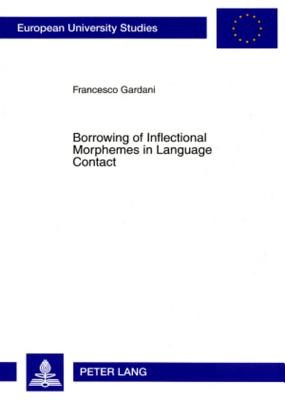
- We will send in 10–14 business days.
- Author: Francesco Gardani
- Publisher: Peter Lang D
- ISBN-10: 3631565194
- ISBN-13: 9783631565193
- Format: 14.8 x 21 x 0.7 cm, minkšti viršeliai
- Language: English
- SAVE -10% with code: EXTRA
Borrowing of Inflectional Morphemes in Language Contact (e-book) (used book) | bookbook.eu
Reviews
Description
This book is about the borrowing of inflectional morphemes in language contact settings. This phenomenon has at all times seemed to be the most poorly documented aspect of linguistic borrowing. Contact-induced morphological change is not rare in word formation, but exceptional in inflection. This study presents a deductive catalogue of factors conditioning the probability of transfer of inflectional morphology from one language to another and adduces empirical data drawn from Australian languages, Anatolian Greek, the Balkans, Maltese, Welsh, and Arabic. By reference to the most advanced theories of morphology, a thorough analysis of the case studies is provided as well as a definition of inflectional borrowing according to which inflectional borrowing must be distinguished from mere quotation of foreign forms and is acknowledged only when inflectional morphemes are attached to native words of the receiving language.
EXTRA 10 % discount with code: EXTRA
The promotion ends in 22d.06:05:07
The discount code is valid when purchasing from 10 €. Discounts do not stack.
- Author: Francesco Gardani
- Publisher: Peter Lang D
- ISBN-10: 3631565194
- ISBN-13: 9783631565193
- Format: 14.8 x 21 x 0.7 cm, minkšti viršeliai
- Language: English English
This book is about the borrowing of inflectional morphemes in language contact settings. This phenomenon has at all times seemed to be the most poorly documented aspect of linguistic borrowing. Contact-induced morphological change is not rare in word formation, but exceptional in inflection. This study presents a deductive catalogue of factors conditioning the probability of transfer of inflectional morphology from one language to another and adduces empirical data drawn from Australian languages, Anatolian Greek, the Balkans, Maltese, Welsh, and Arabic. By reference to the most advanced theories of morphology, a thorough analysis of the case studies is provided as well as a definition of inflectional borrowing according to which inflectional borrowing must be distinguished from mere quotation of foreign forms and is acknowledged only when inflectional morphemes are attached to native words of the receiving language.


Reviews